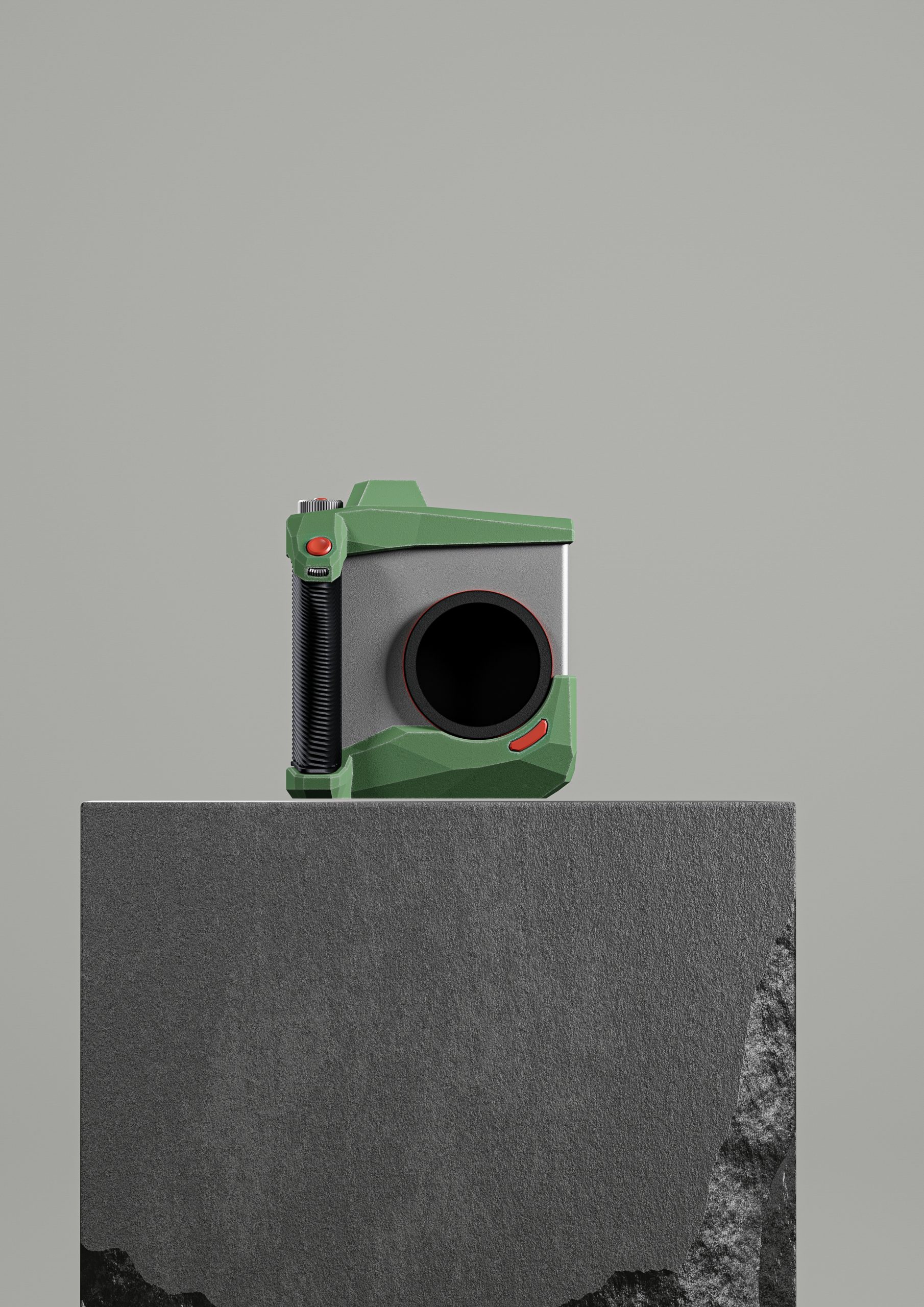
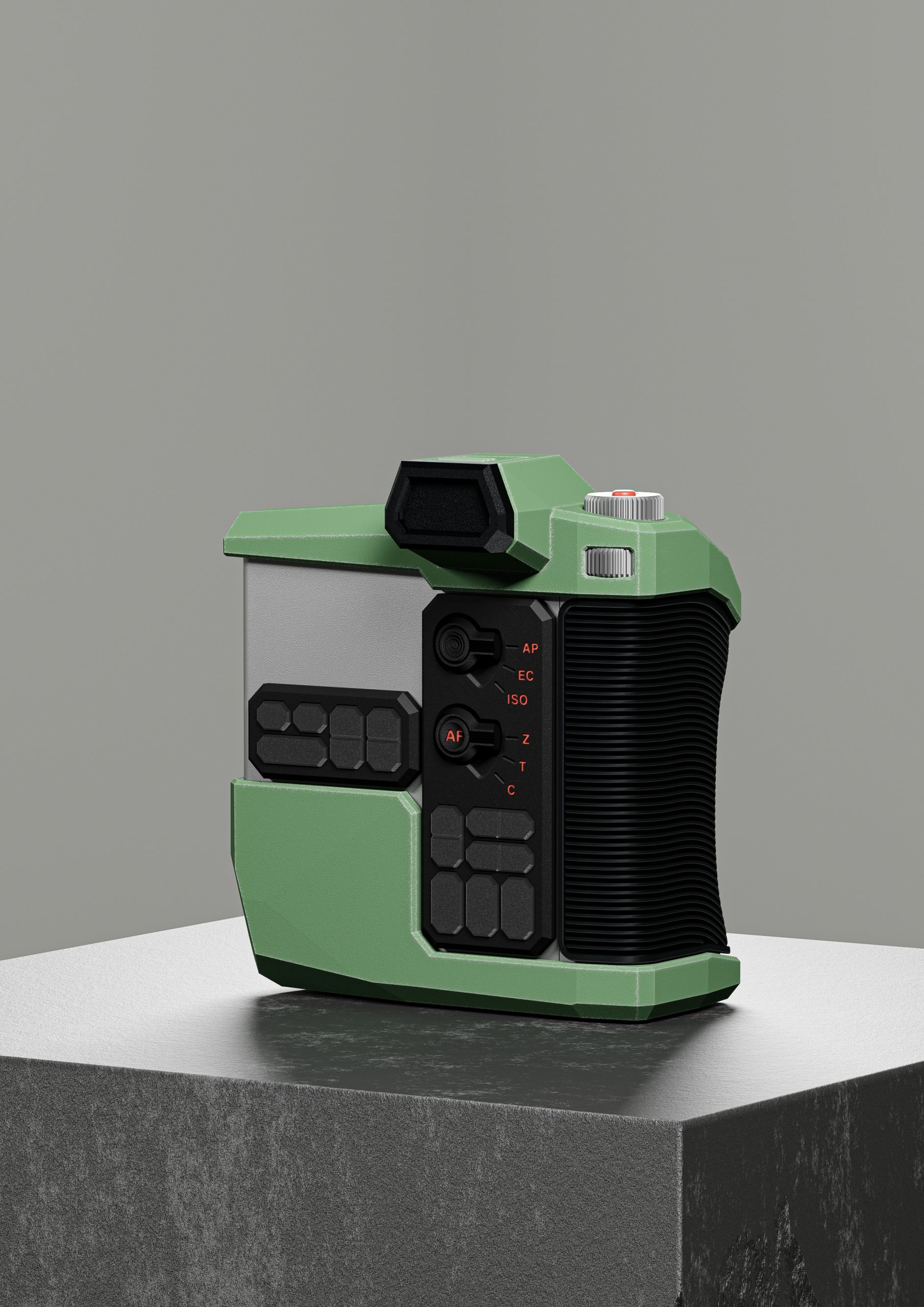
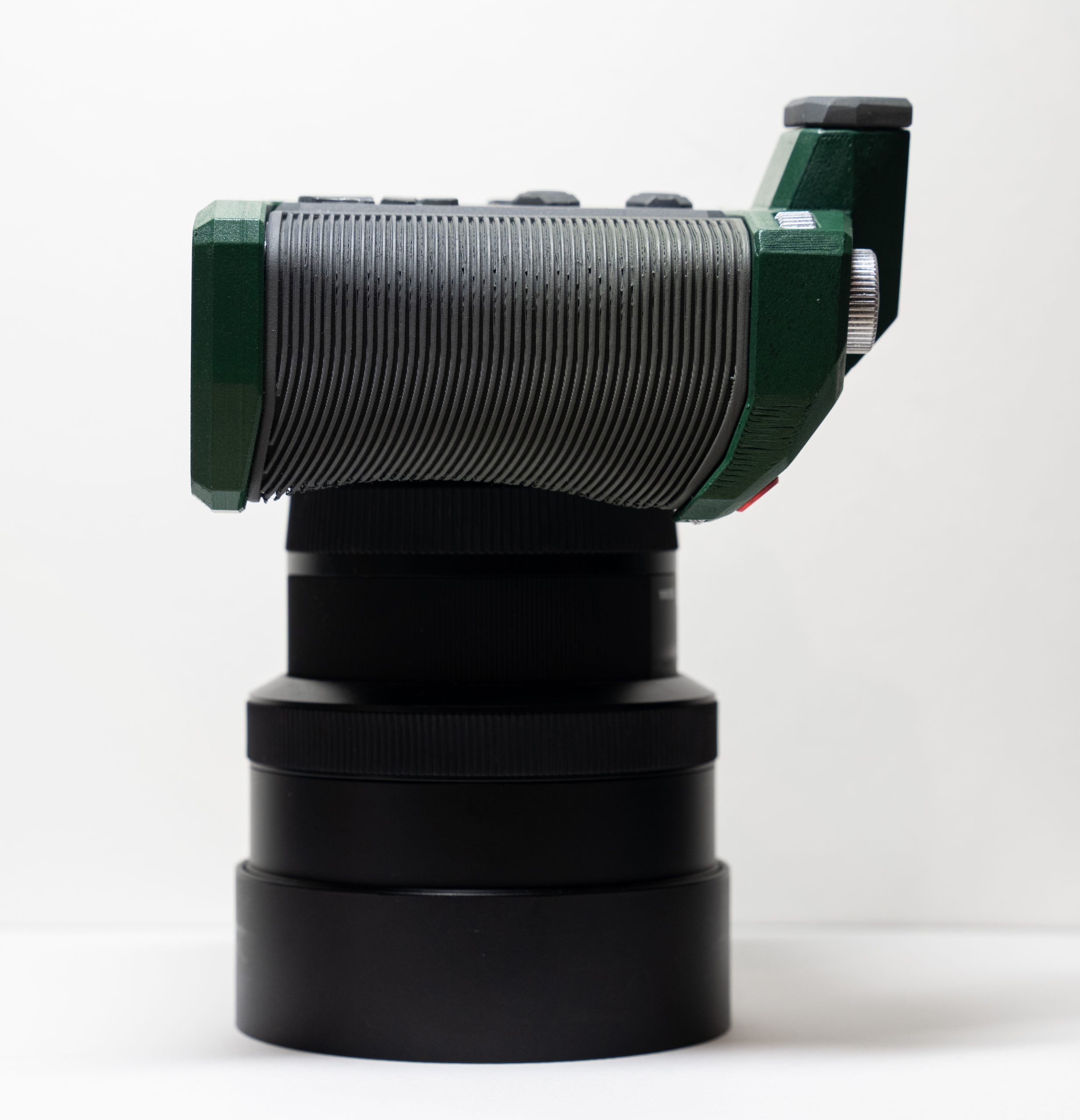
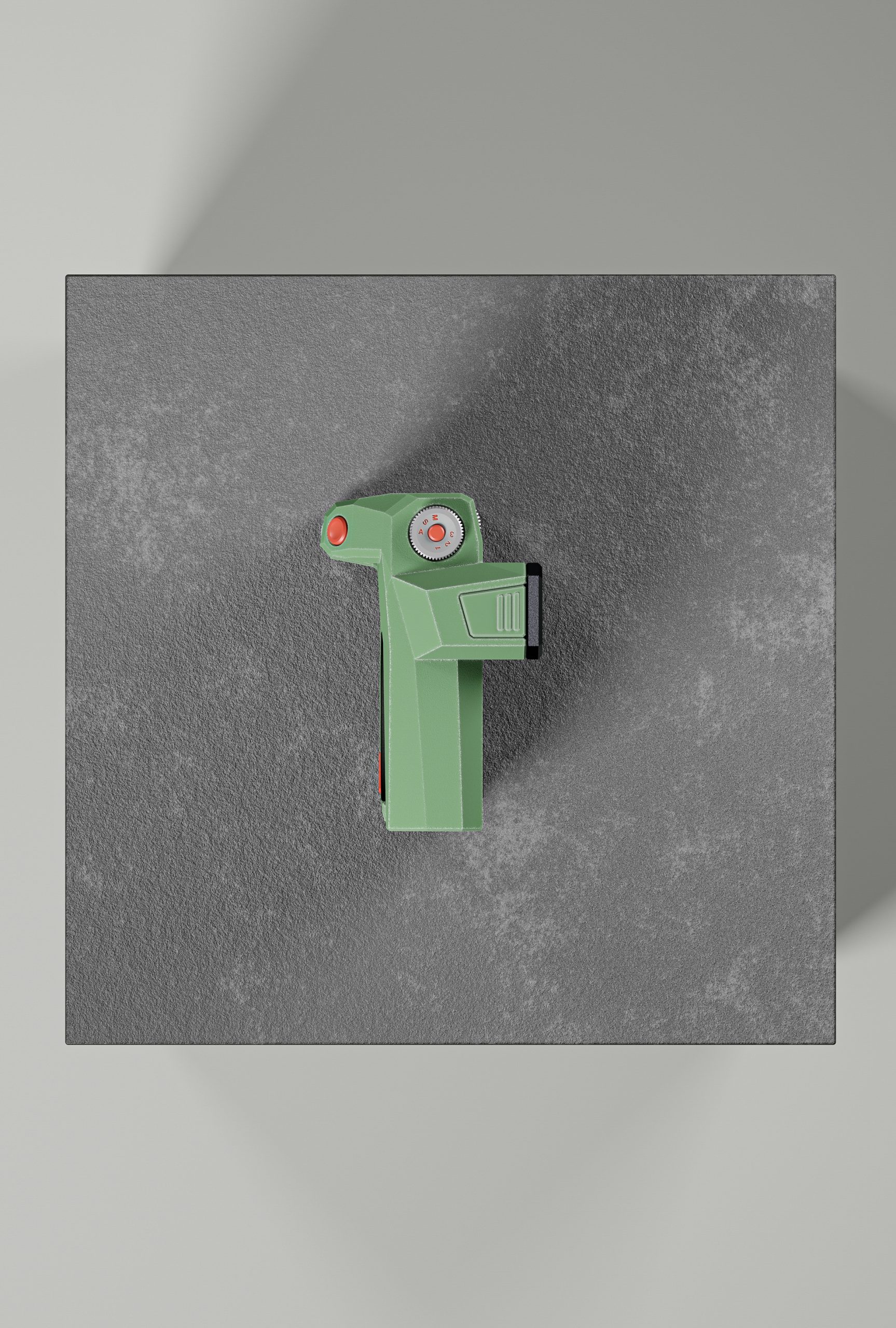
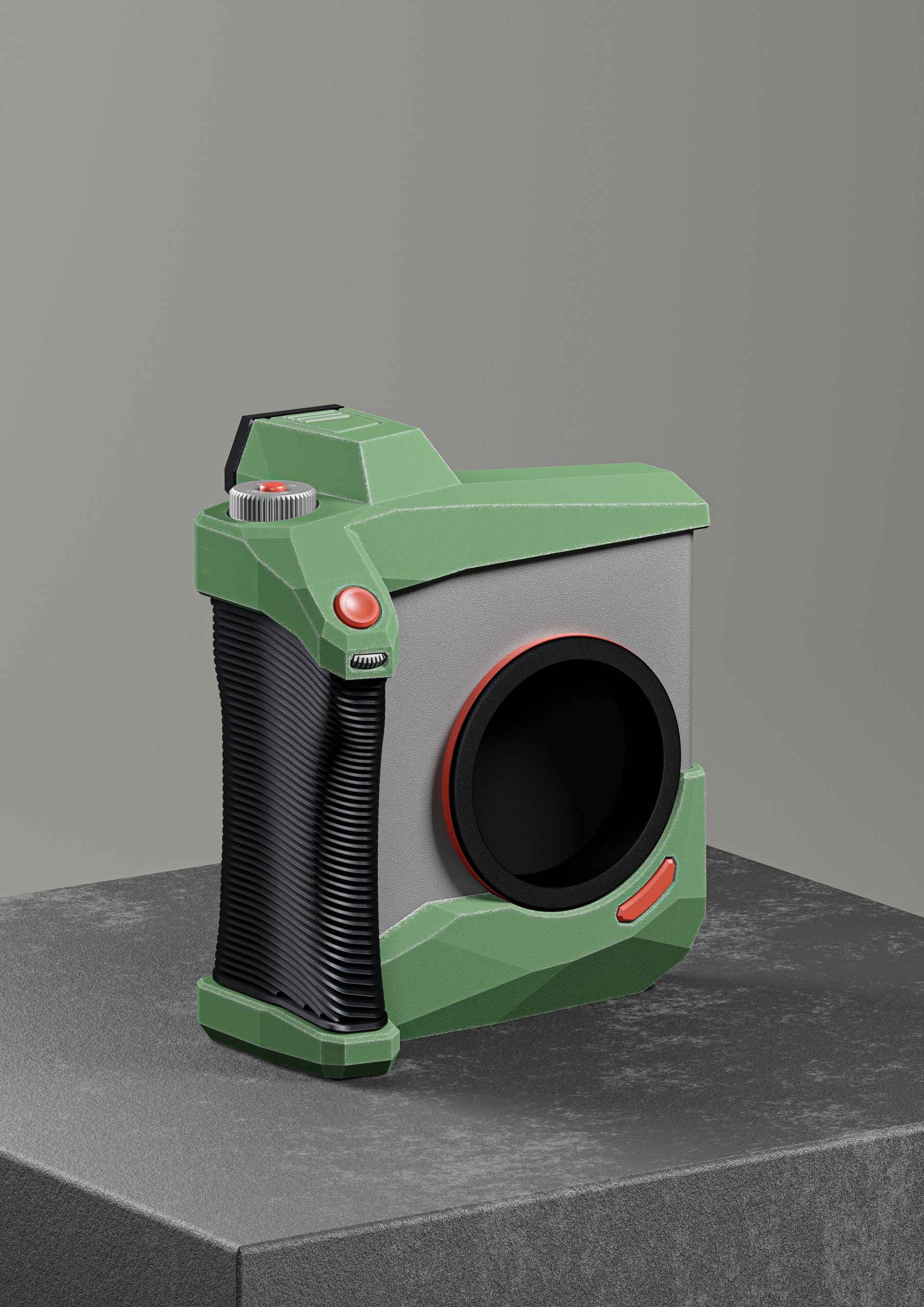
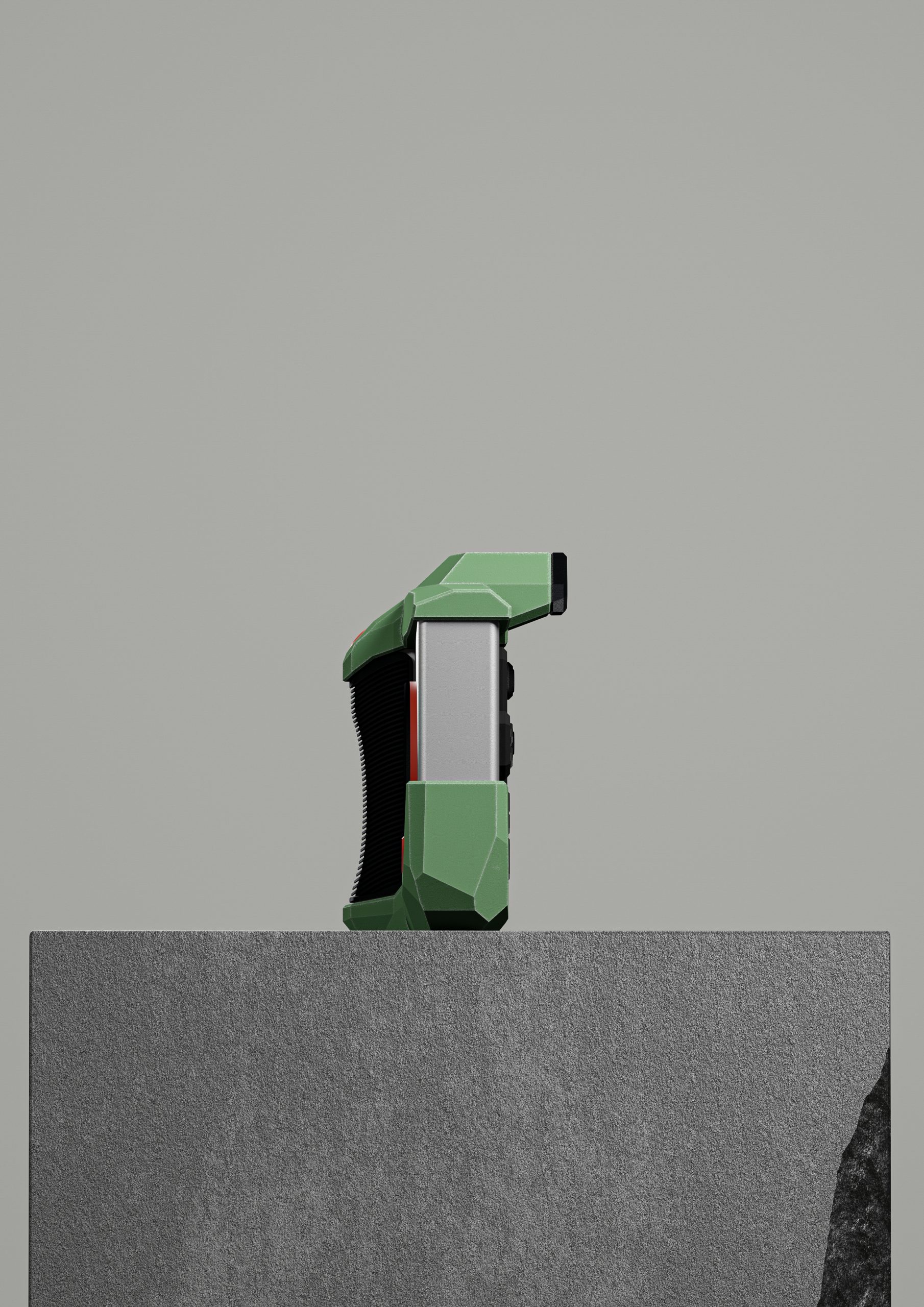
Ethos
Geode was a speculative project formulated as a response to the prevailing trends of the modern camera industry, and as a vision for everything a purpose-built imaging platform could be.
Modern digital cameras seem to inflate every year in price, feature sets, and generalization. Although an automatic, do-it-all product is terrific for headlines and SEO, Photographers who push the limits of their gear are increasingly feeling left behind. Bells and whistles may attract attention, but they usually just result in more points of failure when the going gets tough. When paired with implementation of on-board Ai image processing, a significant threat to the continued transparency and authenticity of photography begins to appear.
In this uncertain environment, Geode is intended as a beacon for a possible future. The Geode camera system is wholisticly designed for the specific needs of documentary, journalistic, and extreme photographers.
Form and Interface
Geode’s tectonic form reflects it’s durability, and is designed to showcase edgewear, and age with grace. Geode is a mirrorless platform, and features as little on-board image processing capability as possible. This architecture allows for significant weight savings and the implementation of advanced shock, water, chemical, and temperature resistive systems, all while highlighting a focus on complete immersion in the moment. Geode’s sensor is oriented vertically, lending to the taller appearance of the camera, while still being about %20 smaller in volume than a Sony A7R iv.
Additional considerations for Geode’s use case include a straight cut grip for use with gloves, and the positioning of the lens mount to align the user’s left eye while the viewfinder is in use.
Other than its digital viewfinder, Geode has no rear screen, instead having two banks of customizable buttons and switches. This gives users complete tactile control over critical camera settings without needing to look down at the camera. The upper thumb switch allows the user to change the function of the rear dial on the fly, while its centre button was replaced with a joystick for moving AF points in the viewfinder. The split buttons on each panel are configurable as two- way switches, while the entire left panel can be replaced or removed.